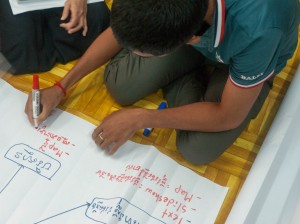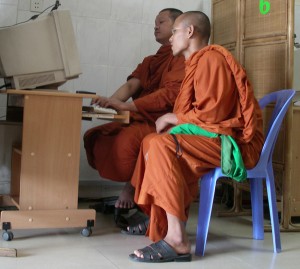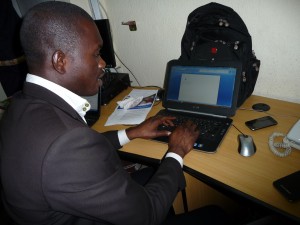Search Results for Tag: online
A new media model worth watching – The Conversation
![]()
The Conversation is a popular Australian online news site that uses academics to cover breaking news and analyze current debates. The idea behind the model is to team up university researchers, who know a lot about many things but can’t necessarily write for a mainstream audience, with editors, who can. The combination of “academic rigour with journalistic flair” (the site’s slogan) has proved a roaring success and The Conversation now attracts nearly 20 million reads a month.
Largely funded by partner universities, the articles are free to read, there are no limits to the number of articles people can read and there is no advertising. In an interesting twist, articles are also free to republish under a Creative Commons license. And in an era where news organizations are continually slashing budgets and laying off staff, the not-for-profit has managed to export its model beyond Australia’s shores to the United Kingdom and the United States.
OnMedia spoke with The Conversation’s founder, Andrew Jaspan.
![]() read more
read more
Online comments are being shut down
 One by one, news sites are changing how they deal with reader comments below online articles. Some are choosing to shut down online comments completely. Others have assigned members of staff the task of strictly moderating comments left by readers, and deleting ones deemed inappropriate. And some have begun outsourcing comments all together to social media sites like Facebook.
One by one, news sites are changing how they deal with reader comments below online articles. Some are choosing to shut down online comments completely. Others have assigned members of staff the task of strictly moderating comments left by readers, and deleting ones deemed inappropriate. And some have begun outsourcing comments all together to social media sites like Facebook.
But hang on, don’t editors appreciate reader participation anymore? Well, it seems they do, but they’re tired of combatting racist and sexist comments, vulgar allusions and off-topic discussions that don’t offer any insight or value to other readers (or so they say).
![]() read more
read more
How to plan your multimedia story
An online multimedia story is a combination of video, text, photos, audio, graphics and interactive elements where each aspect complements the others. It allows a reporter to draw on the strength of each medium to tell a more compelling story.
But making a multimedia story really shine requires forethought and planning. Even before going out to report, journalists need to think about how they’re going to approach the story, when they’re going to use video, text, sound or photos, and then tie everything together to create a cohesive package. onMedia’s Kyle James has tips on doing the prep work to make sure your multimedia story is a success.
![]() read more
read more
Proposed cyber law threatens free expression in Cambodia
In Cambodia, most media outlets firmly toe the government line. But one area where Cambodians can express themselves freely and receive and share unbiased information is on the Internet. However, a bill drafted in secret by the ruling party could put an end to that. For this year’s World Press Freedom Day, Kyle James examines the possible new restrictions that have press freedom advocates very worried, and possible reasons the government is getting strict.
![]() read more
read more
Local news site network growing fast in Asia
 English speakers in big Asian cities can buy English-language newspapers but many still want more detailed information about what’s happening in their own neighborhoods. That was an unfilled niche that American journalist Byron Perry saw in his adopted city, Bangkok. In 2011, he launched Coconuts out of his apartment to provide local news in English. Now he’s got sites in five Asian cities and big plans for the future.
English speakers in big Asian cities can buy English-language newspapers but many still want more detailed information about what’s happening in their own neighborhoods. That was an unfilled niche that American journalist Byron Perry saw in his adopted city, Bangkok. In 2011, he launched Coconuts out of his apartment to provide local news in English. Now he’s got sites in five Asian cities and big plans for the future.
![]() read more
read more
Interview: New newsrooms mean more teamwork

CC image courtesy of victoriapeckham on Flickr
Many traditional newspaper publishers have completely restructured their newsrooms so that their print and online departments now work together. The way that they have done though varies enormously. In some, print and online journalists work side by side; in others, there is no distinction between the two departments at all.
Klaus Meier is a German media expert who has been closely observing exactly how media organizations are integrating their newsrooms. Together with researchers from Spain and Austria, Meier first published a detailed analysis of newsroom convergence in 2008. The team have done a follow up study this year.
DW Akademie’s Steffen Leidel talked to Klaus Meier about what newsrooms look like today and what these changes mean for the journalism of the future.
![]() read more
read more
What is the future of print journalism?
As more and more newspapers around the world feel the crunch of competition from the Internet, the big question is: what is going to happen to print? DW Akademie invited 11 newspaper managers and editors from countries as diverse as Kenya and Kyrgyzstan to Germany to explore ways of preparing and adapting their papers for a digital future. We asked some of them how they thought print journalism might evolve in the years to come. Here are their answers.

![]() read more
read more
Aron Pilhofer: ‘You have to put priority on digital’
The New York Times has long served as a example of a media organization that is successfully combining digital technologies with high-quality journalism. From the Pulitzer prize-winning, multimedia story Snow Fall, which has generated more than 3.5 million page views, to its paywall subscription model, many are looking to the prestigious institution for answers on how to survive the digital future. But the New York Times is also still experimenting. “We don’t know what is best practice,” says Aron Pilhofer, one of the best digital minds at the news organization.
Pilhofer is head of the social media team, communities team and interactive news team, which employs journalists as well as programmers and data experts (follow Pilhofer on Twitter). He recently has a new team to manage – the newsroom analytics team which aims to better understand how content is consumed. In an interview with DW Akademie’s Steffen Leidel, Pilhofer explains his hopes for the new team, the lessons he has learned from past mistakes and the challenges facing future generations of journalists.
![]() read more
read more
Journalists@work: Malik Abass Daabu
In the next of our Journalists@Work series we meet Malik Abass Daabu, Editor of Myjoyonline in Accra, Ghana. Myjoyonline is the website of radio station Joy-FM and is one of the most successful Ghanaian news websites in the country. The 33-year old has been working as an editor of myjoyonline for five years and is a graduate of the Ghana Institut for Journalism. DW Akademie’s Christine Harjes spoke to Malik about his work and myjoyonline.
![]() read more
read more
Online security: How to create and manage secure passwords
 A secure password is one of the first steps towards more digital security. If your password has been cracked, hackers can get access to valuable personal information, steal your money and damage your reputation by distributing harmful content in your name. DW Akademie’s Natalia Karbasova offers some basic rules to help you create secure passwords and checks out selection of tools for password management and security check.
A secure password is one of the first steps towards more digital security. If your password has been cracked, hackers can get access to valuable personal information, steal your money and damage your reputation by distributing harmful content in your name. DW Akademie’s Natalia Karbasova offers some basic rules to help you create secure passwords and checks out selection of tools for password management and security check.
![]() read more
read more












Feedback